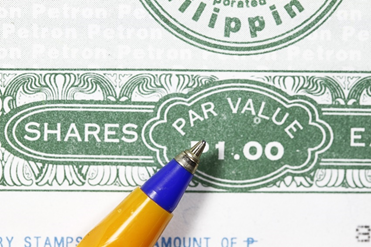Face value is the original price you buy a share of a particular company for. The face value is considered the base when calculating the returns from a particular stock.
When you buy a share, the face value of those shares is clearly stated on the share certificates. To know everything about the face value, read on.
What is the face value of a share?

The face value of the shares depicts the nominal value of the shares at which they were issued. When you buy shares, you get them at a quoted price called the face value, also called the share’s par value.
As an investor, it is crucial to understand the concept of face value and how it can affect investment decisions. When a company floats its shares in the share market through IPOs, it fixes a price for its shares which becomes its face value.
Face value also depicts the value of the business recorded in the books.
Return on equity: Highlights
- The face value of a share is the value at which an investor buys it at the initial stage of offering.
- The deviation between the book value and the market value helps you analyse the current value performance of the share.
Share or bond certificate

When an investor buys shares of a company, the company issues a share certificate to the investor. This certificate is proof of ownership.
The share certificate is issued at face value, which is clearly stated on the certificate. Along with this, the share certificate also contains the class of shares, the certificate’s issue date and every other information that might help the investor keep a tab on the share performance. The face value of the share is also stated on the company’s financial statements.
Generally, the value of the shares mentioned in the share certificate is decided by the company itself. However, before they define the face value, a company may consider a set of factors.
Importance of face value

The face value is vital from a company’s perspective as it enables the company to calculate the accounting value of its shares.
When an investor invests in the share market or buys a particular share, they determine the market value and book value of the shares. This value helps the investor understand how well the shares are currently performing. Face value is also helpful in
- Determining the current market value of the shares
- Calculating share premiums
- Assessing profitability
- Calculating interest
Face value vs market shares
Individuals, especially new investors, confuse the face value and the market value of the shares. While both concepts denote the value of the shares at a particular time, they are quite different.
Let’s understand the difference between the face value and market value –
| Face value | Market value |
| The face value represents the nominal or the initial value of the shares at which it was issued to the investors. | The market value of the share is the current price of the share on the stock exchange. |
| A company decides the face value of a share based on several factors, like the company’s valuation during the release of an IPO, etc. | The market value of a share is determined by the supply and demand in the market, i.e. prices at which it is purchased on the stock market. |
| The face value of the share does not change with the fluctuations in the market. | The market value is affected by several factors, like changes in government policy, economic conditions, demand etc., |
| The face value is calculated by dividing the equity share capital of the company by the number of outstanding shares. | The market value of a particular company is calculated by multiplying the outstanding number of shares by the current market price of the share. |
Face value vs book value
The share’s face value and book value are closely related concepts. However, they have a few differences.
| Face value | Book value |
| The face value depicts the value at which the shares were issued initially to the investors. | The book value is the amount that depicts the total value of the company’s assets that the shareholders will get if the company is liquidated. |
| The face value is calculated as: the value of the share capital / outstanding number of shares | The book value is calculated as: total assets – (intangible assets + liabilities) |
Conclusion
A share’s face value is a vital information piece for investors. You must look at this value before investing in a particular stock. Also, if you are an investor or are planning to enter the investment space, you must try to understand the importance of face value and how it differs from the market value and the book value of the shares.



